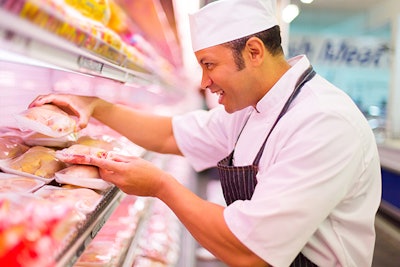
Retail meat sales exploded during the pandemic, but consumers are changing their shopping behaviors as inflation and foodservice recovery impacts both unit and volume sales.
“As we all know, it's been a great number of years in terms of dollars and we have gone all the way from three years ago – less than $70 billion and we thought we were big then – all the way to $85 billion,” Anne-Marie Roerink, principal of consumer survey firm 210 Analytics LLC, said. “We have to understand what is happening in the meat case of today to drive that performance.”
During a webinar about the Cryovac Brand 2022 National Meat Case Study, Roerink identified four of the latest trends in the fresh meat retail case:
1. SKUs are contracting
The number of stock keeping units (SKUs) found in a retail store is contracting – and will continue to decrease in future years.
“I think a SKU contraction will be something that we’re going to see for a little while. We’ve all figured out that perhaps we had a little too much variety,” Roerink said.
The study revealed that individual stores typically featured 117.3 SKUs in 2022, a 10% reduction from 2022. For chicken, the number of SKUs per store was 26 in 2022, down from 36 in 2018.
Avian influenza may help explain some of the lack of inventory for poultry in 2022, she added.
2. Package weights are increasing
In 2022, the average package weight increased slightly for chicken, pork, beef and turkey, the study revealed. For chicken, the average package weight was 2.9 pounds, up from 2.4 pounds in 2018.
Increases in package size is due, in part, to growing interest in bone-in meat products in store.
The shift to case-ready meat versus meat counter cuts continues to increase, now representing 83% of all protein packages in store, up from just 49% in 2002. The greatest growth in case-ready meat occurred in chicken and turkey.
3. Move toward more sustainable packaging
Meat packaging in retail, by and large, moved away from foam in recent years, a major sustainability win for the meat industry, Roerink said.
“I think this is one of those areas where, as an industry, we should celebrate and talk about because that very much plays into the consumer sentiment of preventing food waste and packaging waste as well,” she said.
Instead of foam, popular packaging types tend to be vacuum, PVC wrap and poultry film. More retailers are also moving towards trayless packaging, now representing 47% of meat products available.
4. Branding and claims-based meat still attract attention
Private brands and claims-based products, including natural, organic, antibiotic-free and value-added, all continue to be major factors in the consumer decision-making process.
Although private brands are growing in popularity in retail, it doesn’t mean that these brands are edging out supplier brands. Instead, private brands are taking market share from previously branded products.
Organic claims also remain strong, despite consumer concerns about inflation and price increases. The organic consumer tends to be higher income, with more money for discretionary spending on claims-based products.
Another claim that saw growth is value-added. This is very popular with millennials, who value easy meal solutions that also provide lots of choices for flavor profiles.
The Cryovac Brand 2022 Meat Case Study provides a comprehensive overview of the fresh meat retail case. The study gathered data from 152 stores in 97 U.S. cities between February and May 2022.


















